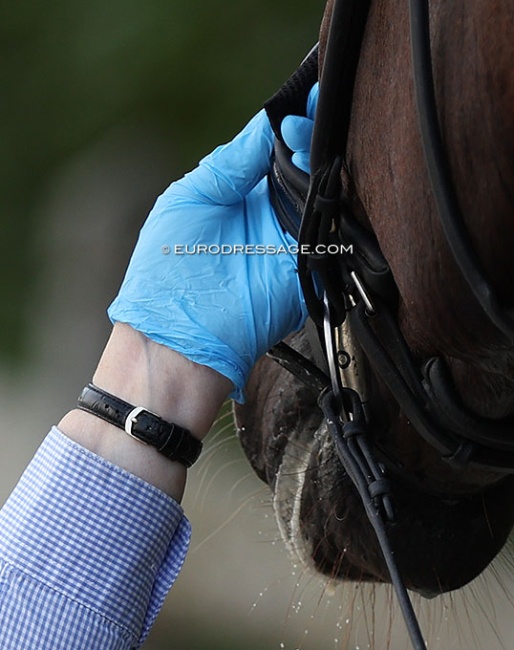
-- Theo Ploegmakers is the president of the European Equestrian Federation (EEF). He was active as a jumping rider and sponsored international jumping rider Eric van der Vleuten for six years. Before he became president of the KNHS he was vice-president of the well known CSI/CDI ‘Indoor Brabant’ at ‘s-Hertogenbosch for ten years. During his career Theo Ploegmakers was active as manager, director and vice-president of internationally operating firms.
As EEF president Ploegmakers wrote the following messages to the riders:
Rules and Regulations to safeguard horse welfare in the sport
There are many comments, especially from riders, on the FEI’s introduction of a tool to check the tightness of nosebands for horses in top-level competitions, to be implemented by 1 May 2025. This tool is being introduced following numerous reports of excessively tight nosebands.
Rules for Horse Welfare
The FEI, as the global governing body of Equestrian sport, has the task of creating rules that prioritise horse welfare and prevent potential mistreatment. However, some top riders often claim that they know what is best for their horse and are best placed to judge what is right or wrong; therefore the FEI should not make rules on how to harness horses. But is that so?
Rules about horse welfare in equestrian sports are essential to ensure that horses are treated ethically and remain healthy and safe during training, competition, and beyond. Horses are non-verbal and rely entirely on humans to interpret their needs and protect them.
Short-Sighted
By addressing these concerns, horse welfare rules create an environment that balances the demands of the sport with the well-being of its equine participants. This is not only essential for the health and safety of horses but also for the sustainability and public acceptance of equestrian activities.
The opinion of top riders that the FEI should not make rules such as the tightness of nosebands, certain bits etc. because “they” know best what their horses need and what is best for their horse, is shortsighted and poses a danger to horse welfare for several reasons:
- Even experts can make mistakes: While top riders may have significant experience, they are not infallible. They can misjudge a situation, succumb to pressure to perform, or make decisions influenced by personal biases or emotions.
- Lack of oversight invites abuse: Without standardised rules, there is no mechanism to prevent or address mistreatment. The assumption that expertise guarantees ethical behaviour is risky, as not all riders may prioritise horse welfare above success or financial gain.
- Consistency matters: FEI rules establish universal standards to ensure all horses on all levels are treated fairly and responsibly, regardless of a rider’s skill or status. Without these rules, practices would vary widely, leading to inconsistencies and potential harm.
- Safeguards against harm: Welfare regulations are based on veterinary science and ethical principles, providing a framework that minimises risks such as abusive practices. These safeguards apply equally to all participants, from novices to top professionals.
- Conflict of interest: Riders, no matter how skilled, may prioritise competition success over welfare in high-pressure situations. FEI rules act as a counterbalance to ensure horses’ needs remain a priority, especially in the face of competitive or financial incentives.
- Unconscious bias: Even well-intentioned riders may fail to recognise signs of stress or injury in their horses, particularly if they are focused on winning or meeting training goals.
- Public trust in the sport: The public expects clear regulations to protect horses and may view not making rules as a lack of commitment to welfare.
- Ethical responsibility: FEI rules reflect society’s evolving standards of care for animals and hold all riders accountable to these principles.
- Risk of normalised abuse: Without oversight, practices that harm horses, such as overuse, harsh training methods or pushing injured horses to compete, could become widespread and eroding the welfare protections the FEI has established.
Ethical Treatment of Horses
The stance that top riders "know best" is therefore short-sighted. Rules are not just for those who lack experience; they are a critical safeguard for ensuring ethical and consistent treatment of horses across the sport.
While top riders may possess exceptional knowledge, it is neither fair nor safe to assume they are immune to error, bias, or the pressures of competition. Responsible riders should recognise the value of FEI rules in protecting horse welfare and ensuring the sport's integrity.
The FEI can be expected to introduce rules only when it is clear that it is protecting the welfare of horses and does so in proper consultation with stakeholders.
Related Link
Theo Ploegmakers: "Greatest Threat to the Sport is The Public's View of The Way We Handle Horses"